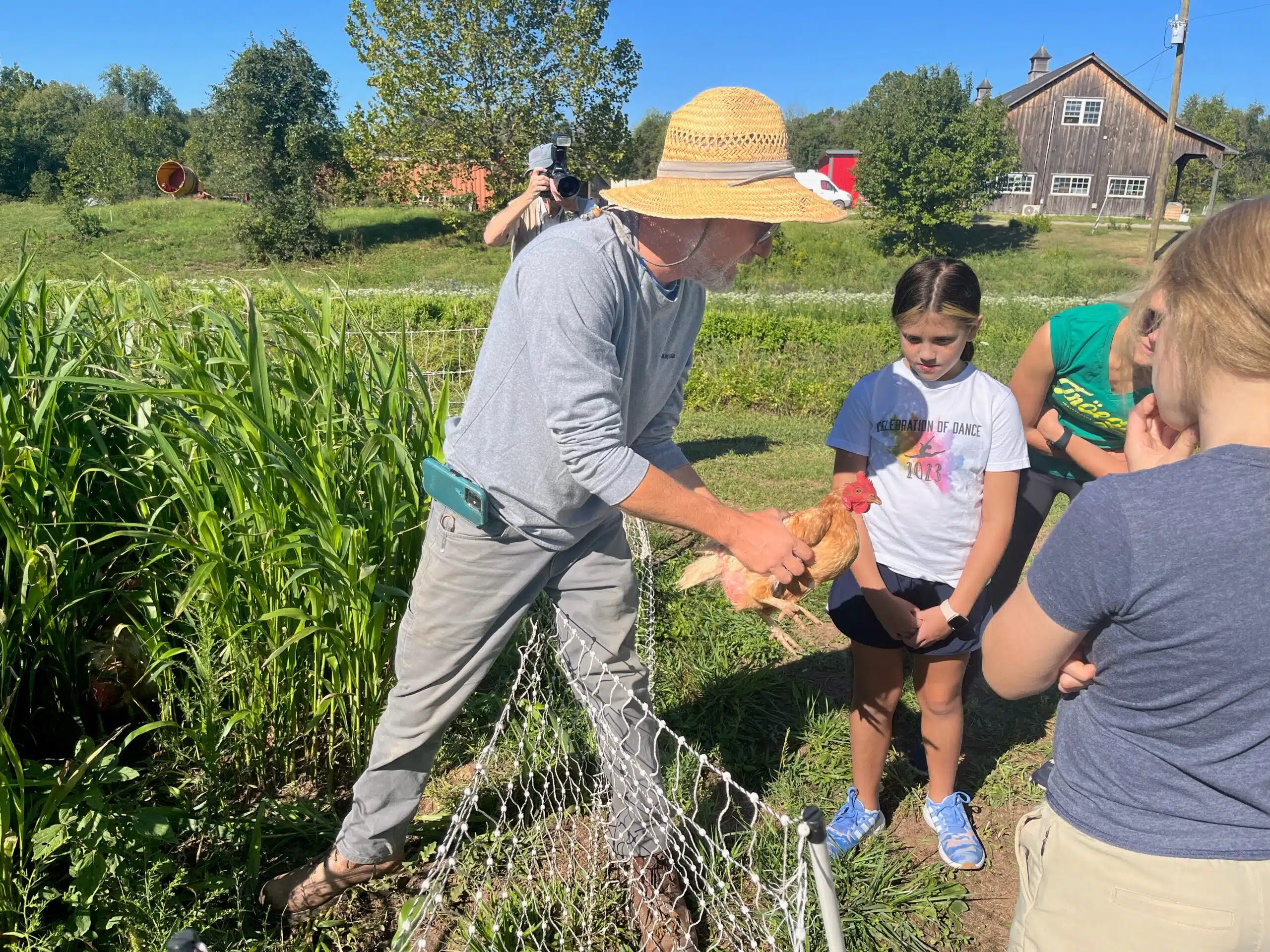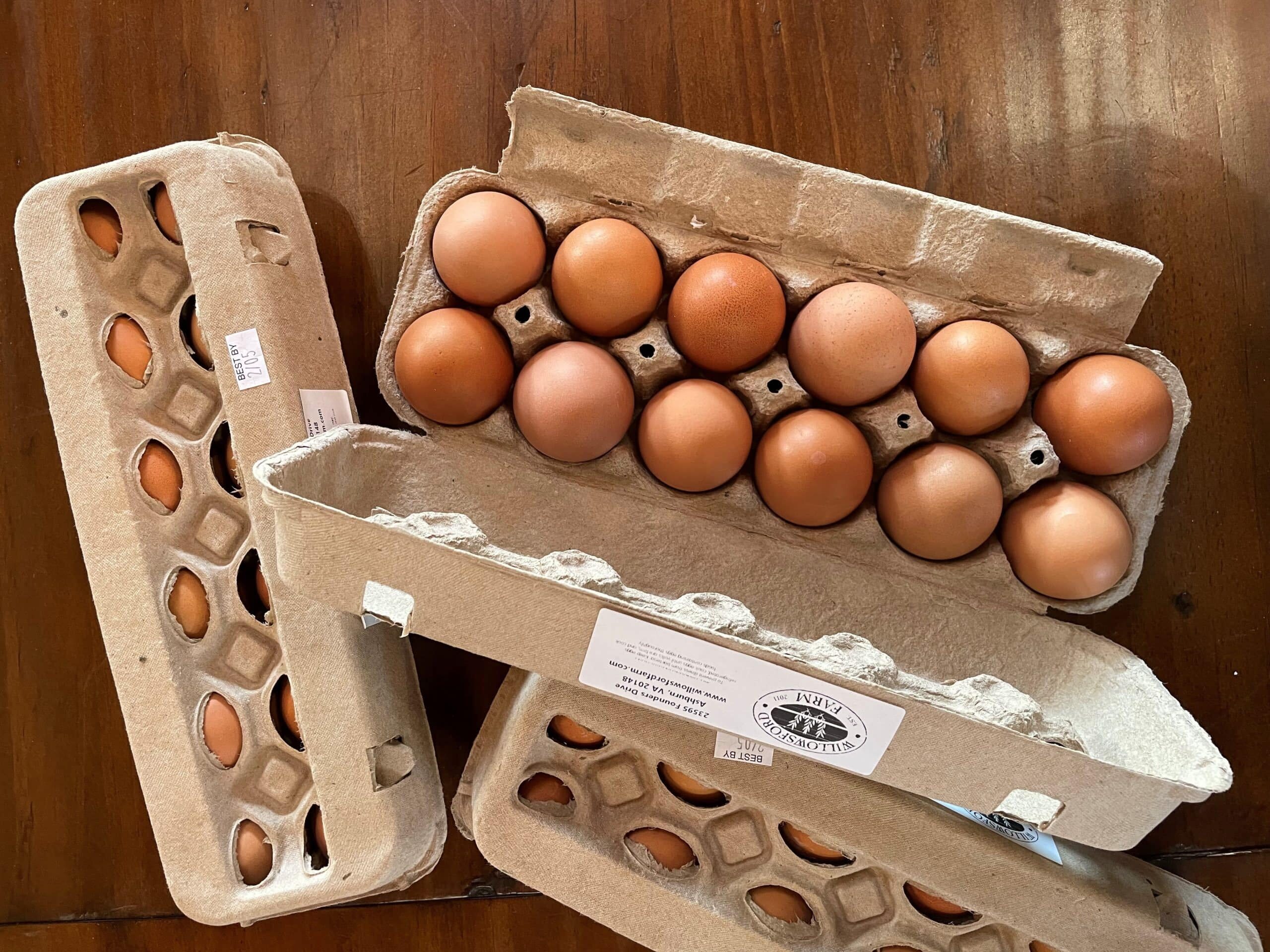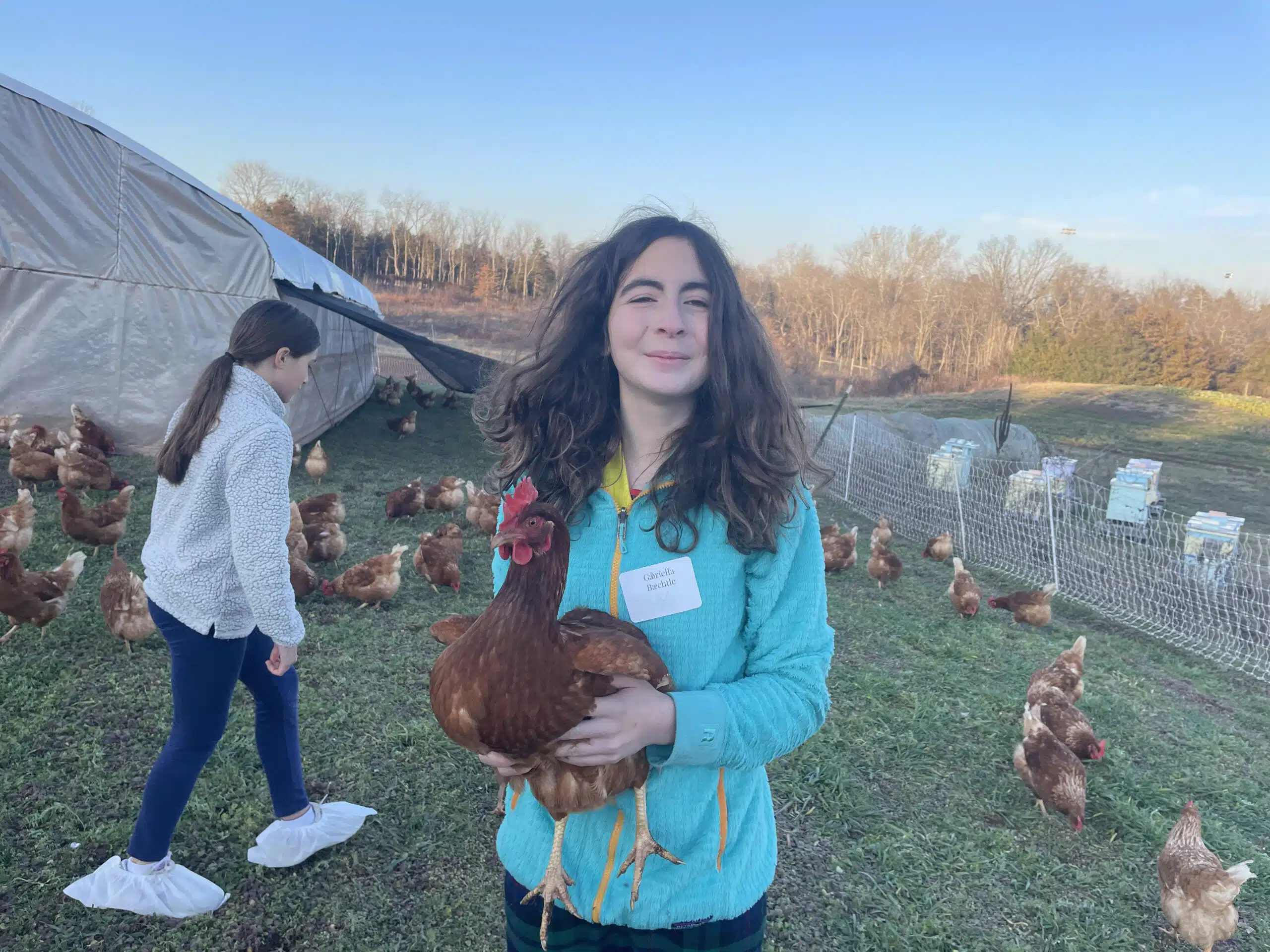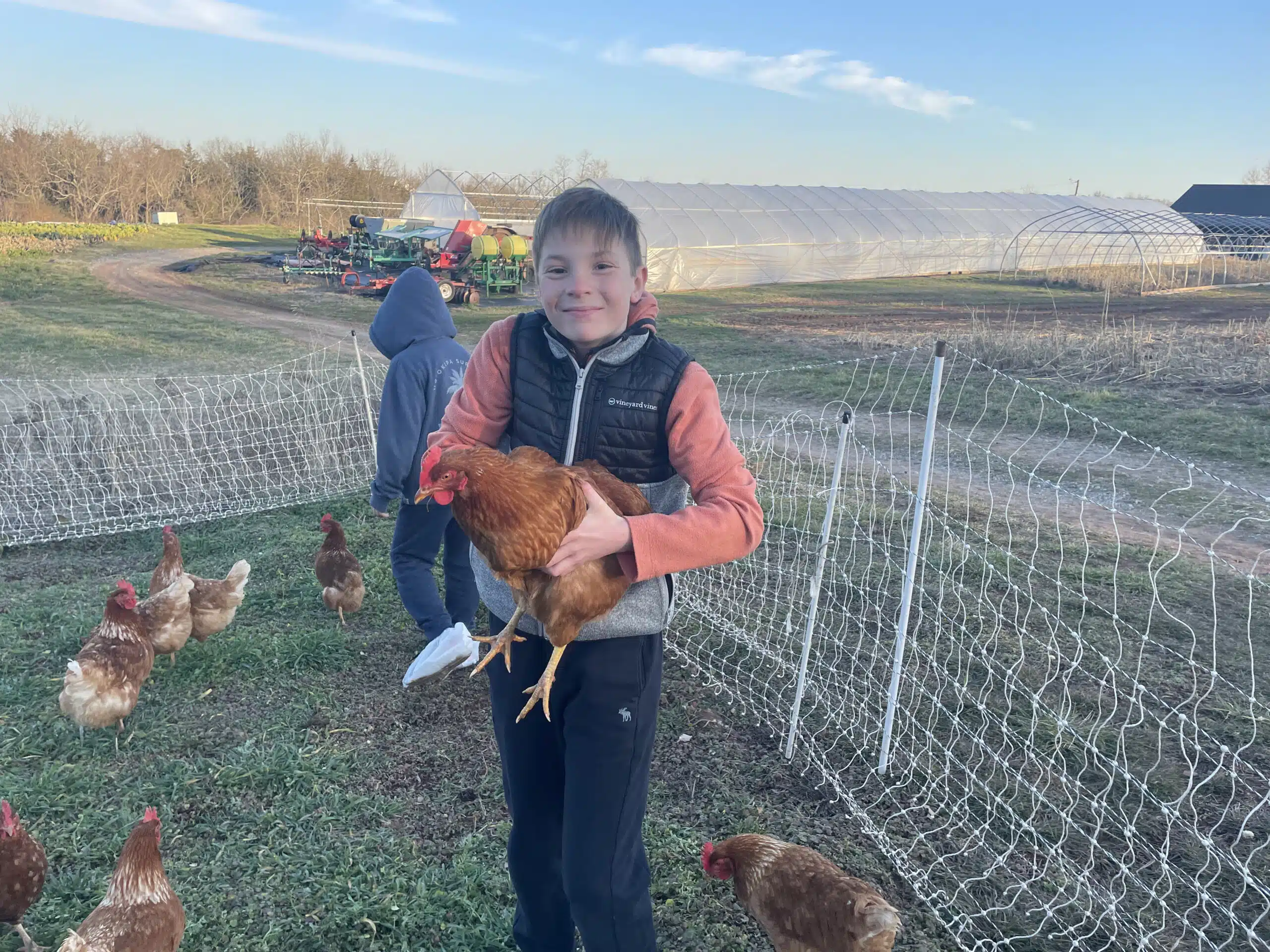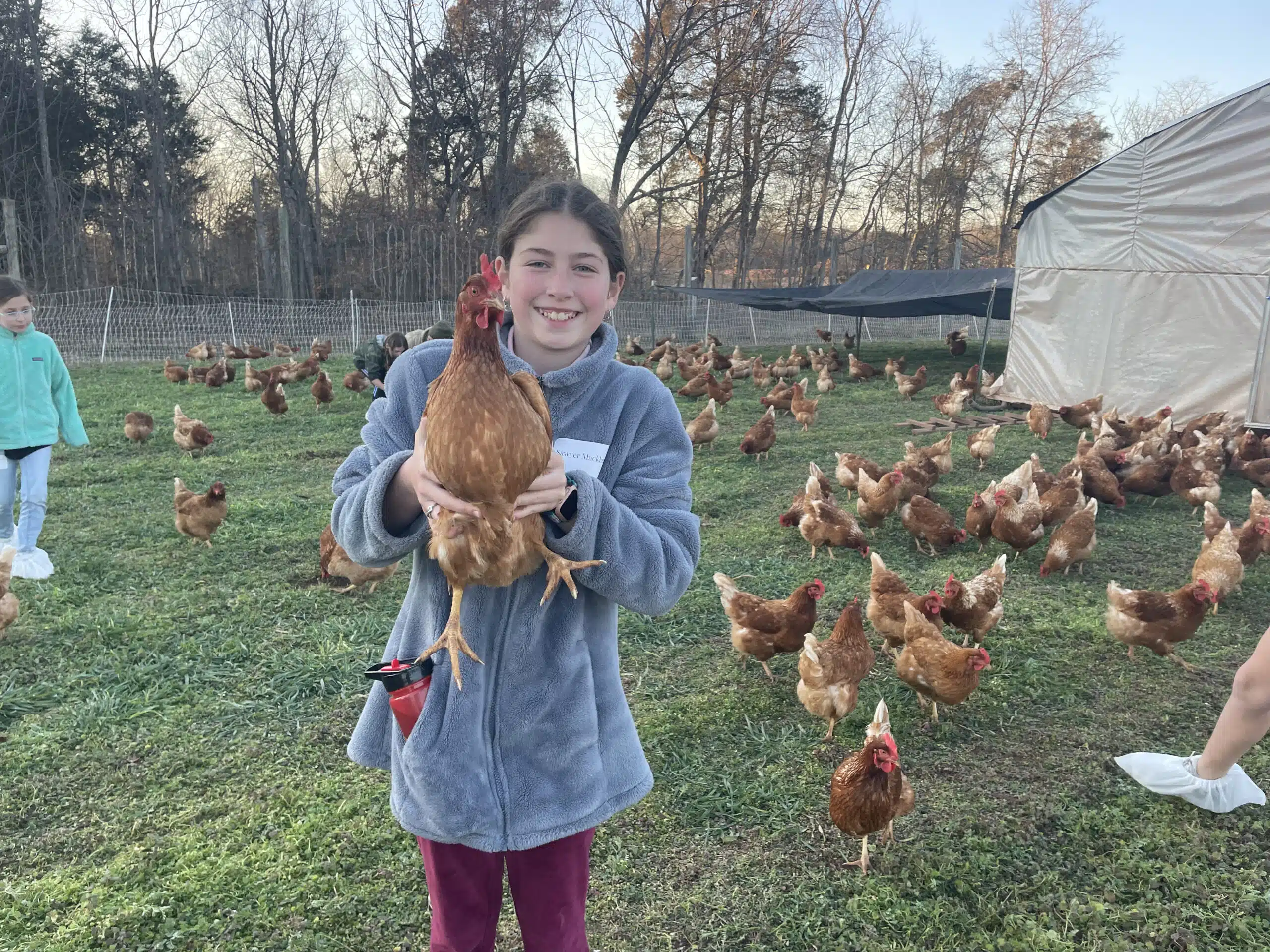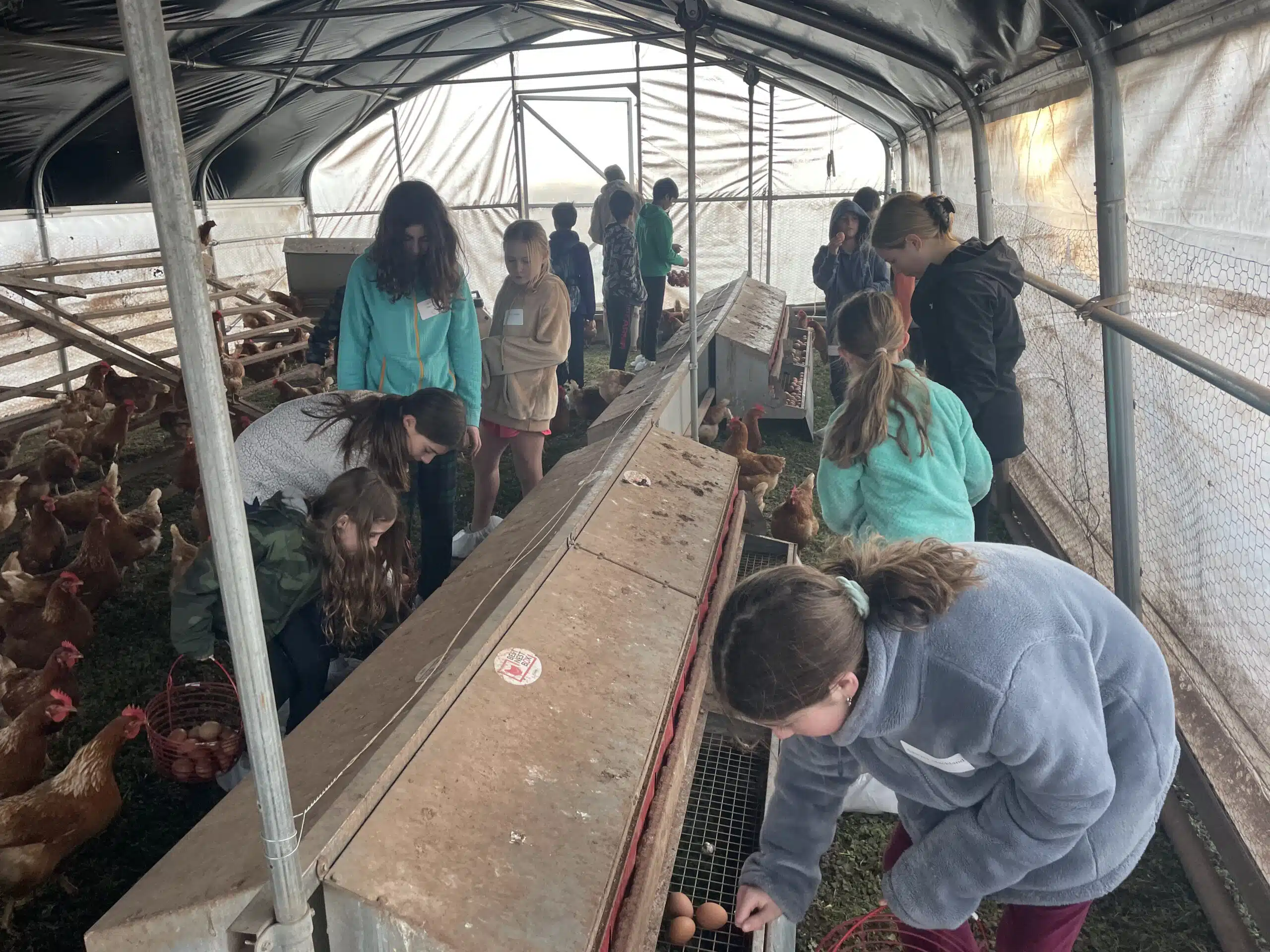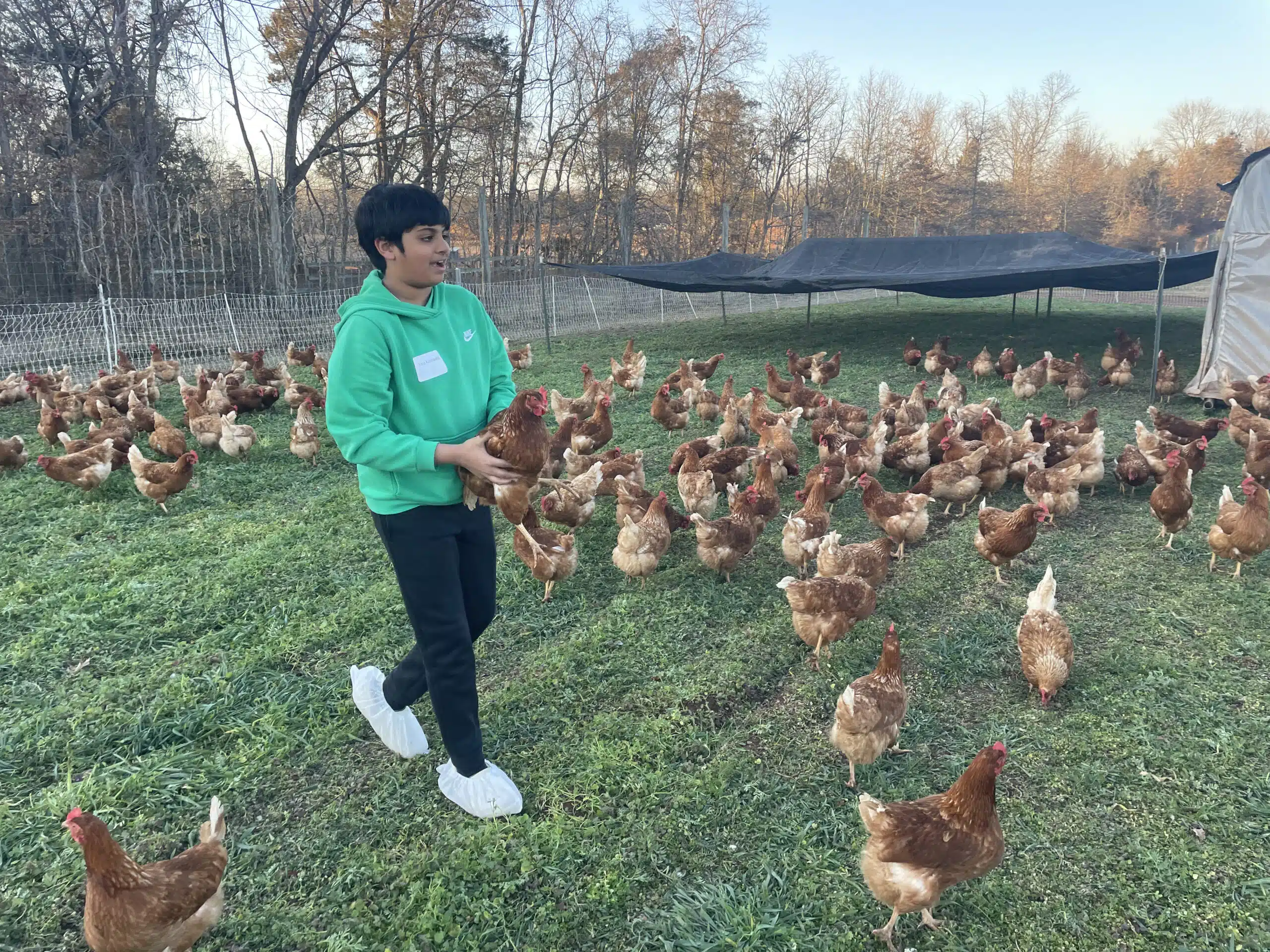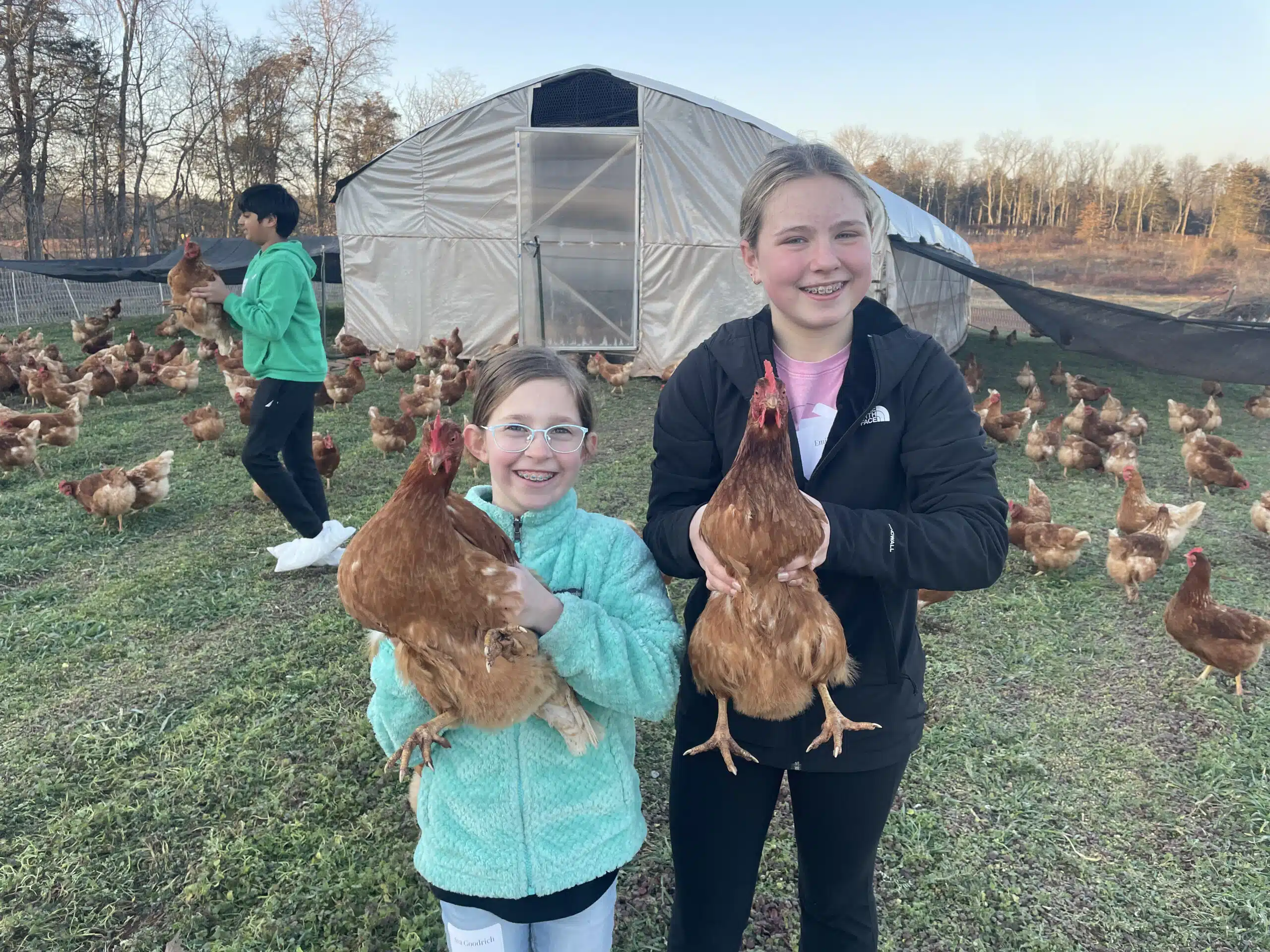Ever wondered how chickens produce eggs? Our hens are a cross called Novogen and have been bred to be excellent layers. During peak season one of our chickens can lay an egg up to 5 days a week! It all starts with the yolk, also called an oocyte, and begins with ovulation. To produce an egg fit for human consumption it is important that the egg remain unfertilized – so no roosters here at Willowsford Farm. Approximately 20 minutes after ovulation, the oocyte is released into the oviduct, a long spiraling tube in the hen’s reproductive system. It takes about 2-3 hours for the albumen (that’s the egg white) to form around the yolk as it moves down the oviduct. Over the next hour, the shell membrane is formed before spending the next 16 hours in the uterus. During that time, the full shell is formed, mainly with calcium carbonate and the egg gets its “bloom” which is a thin coating that helps the egg pass through the cloaca before being laid. The bloom also protects the egg from bacteria, and washing the eggs removes this thin coating, causing the eggs to require refrigeration. In other countries eggs are not washed and you can store your eggs on the kitchen counter. In the United States food safety regulations mandate that eggs are washed prior to retail sale, so Willowsford Farm eggs must be stored in the fridge! Last but not least, it takes about 6 minutes of contractions for the chicken to lay the egg. All in all, the process takes approximately 24 hours from start to finish…definitely a full-time job!
We collect eggs daily at Willowsford Farm in the afternoon to give our ladies plenty of time for every step of the laying process. Interested in our animal husbandry practices? We’ll be featuring a series of Field Notes about our chickens! Check back soon for our next piece on caring for chickens over the winter.
This past week we had the added bonus of having the Jr. Chef Academy help us with egg collection, thanks kids!

